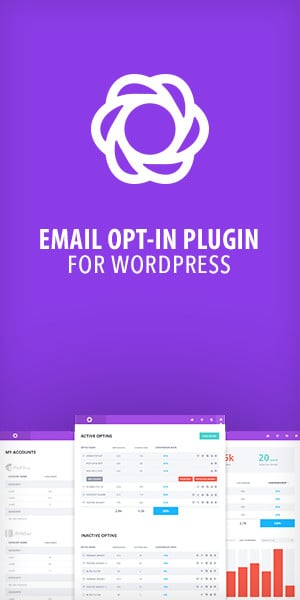How to create content that helps your SEO? Creating content is easy, but creating content that ranks is a whole different ball game.
Search engine optimization (SEO) is the key to getting your content to rank higher on search engine results pages (SERPs). But with so many factors to consider, it’s hard to know where to start. In this post, we will give you 10 tips for creating SEO-friendly content that ranks.
Check out: What is Search Engine Optimization and How It Works?
From keyword research and title tags to meta descriptions and internal linking, we’ll cover all the essential tips and tricks that will help your content rank higher on Google and other search engines.
So, whether you’re a seasoned content creator or just starting out, read on to learn how to create content that gets noticed by both search engines and your target audience.
Check out: How to Start Blogging as a Career and Make Money Online?
01. Define your target audience
One of the most important steps in creating SEO-friendly content ranks is defining your target audience. Knowing your audience is critical in shaping your content strategy, as it will help you identify the topics and keywords that are relevant to them.
Start by creating a buyer persona, which is a fictional representation of your ideal customer. This persona should include demographics such as age, gender, occupation, and location, as well as psychographics such as interests, values, and behaviors.
Once you clearly understand your audience, you can develop content that speaks directly to their needs and interests. This will not only help you attract the right traffic to your website, but also increase engagement and lead to higher conversion rates.
Remember that your target audience may evolve, so stay attuned to changes in their needs and interests and adjust your content strategy accordingly. By defining your target audience, you can create content that resonates with them and ultimately drives more traffic and conversions to your website.
Check out: The 7 Best SEO Techniques to Improve Rankings
02. Research relevant keywords
Researching relevant keywords is a crucial step in creating SEO-friendly content that ranks well. Keywords are the words or phrases that people type into search engines when looking for information or content on a specific topic.
By including these keywords in your content, you can help search engines understand the context of your content and rank it higher in search results.
To research relevant keywords, you can use various tools such as Google’s Keyword Planner, SEMrush, or Ahrefs. These tools will help you identify the most popular and relevant keywords related to your topic. It’s important to choose keywords that have a high search volume but are not too competitive.
Using long-tail keywords, which are longer and more specific phrases, can also help you target a more niche audience and rank higher in search results.
Once you have identified your keywords, include them naturally throughout your content. Be careful not to keyword stuff, as this can cause penalization from search engines. Instead, aim for a good balance of keywords and relevant, high-quality content that provides value to your audience.
Remember, SEO is not just about using the right keywords, it’s also about creating content that is engaging, informative, and relevant to your audience. By doing so, you can drive more traffic to your website, increase your online visibility, and ultimately, improve your search engine rankings.
03. Create a content strategy
Creating a content strategy is crucial to creating SEO-friendly content that ranks. A content strategy is a plan or roadmap that outlines what kind of content you will create, how often you will create it, and who your target audience is.
This strategy will help you create content that is tailored to your audience’s needs and interests and will help you rank higher in search engines.
When creating a content strategy, it’s important to conduct keyword research to understand what your audience is searching for and what keywords they are using to find content related to your industry.
This will help you identify topics that are highly relevant to your audience and ensure that your content is optimized for search engines.
Your content strategy should also include a plan for promoting your content and building backlinks to your website. Backlinks are links from other websites that point to your website, and they are a key factor in how search engines rank websites. Having a plan for building backlinks will help you increase your website’s authority and visibility in search results.
Overall, creating a content strategy is essential to creating SEO-friendly content that ranks. By understanding your audience and their search habits, you can create content that is highly relevant, optimized for search engines, and valuable to your readers. This will help you increase your website’s visibility and drive more traffic to your site.
Check out: What is Content Marketing About?
04. Focus on quality content
In today’s world of digital marketing, the saying “content is king” has never been truer. Search engines are constantly evolving and updating their algorithms to ensure they are providing the best and most relevant results for their users. One thing that hasn’t changed is the importance of high-quality, relevant content.
They designed search engines to understand the content on a web page and filter out any irrelevant or spammy content. Therefore, it is essential to focus on creating quality content that provides value to your audience. This not only helps with your search engine rankings but also keeps your audience engaged and coming back for more.
When creating content, ensure that it is well-researched and informative. Use language that your audience can easily understand and avoid using industry jargon or technical terms that may be confusing. Your content should also be visually appealing, with images and videos to break up text and make it more engaging.
Remember, SEO-friendly content is not just about keyword stuffing or manipulating search engine algorithms. It’s about creating valuable content your audience wants to read and share. By focusing on quality content, you will not only rank higher in search results but also establish your brand as a thought leader in your industry.
05. Use internal and external linking
One of the most important aspects of creating SEO-friendly content ranks is using internal and external linking.
Internal linking refers to linking to other pages on your website. This not only helps users navigate your website but also helps search engines understand the structure of your website and how the pages are related to each other. When creating content, make sure to link to related pages on your website where appropriate.
External linking refers to linking to other websites. This helps search engines understand the context of your content and the relationships between different websites. When linking to external websites, make sure to link to high-quality, authoritative websites in your industry.
It’s also important to make sure that the anchor text (the clickable text of a hyperlink) is relevant to the page you are linking to. Avoid using generic anchor text such as “click here” or “read more” and instead use descriptive anchor text that accurately reflects the content of the linked page.
Overall, using internal and external linking not only helps with SEO but also provides value to your readers by giving them the opportunity to learn more about related topics.
06. Optimize page titles and meta descriptions
Optimizing page titles and meta descriptions is crucial for ranking high in search engine results. A page title is the first thing that a search engine will look at to determine the content of a page. It is also the first thing that users will see in the search engine results, so it needs to be both descriptive and appealing.
A good page title should include the main keyword and accurately describe the content of the page. It should also be concise and easy to read. Including your brand name in the title can also be helpful in building brand recognition.
Meta descriptions, on the other hand, are brief descriptions that appear below the page title in the search engine results. They provide a summary of the page’s content and help users decide whether or not to click through to the page.
A good meta description should also include the main keyword and accurately describe the content of the page. It should be short and to the point, with a clear call to action to encourage users to click through to the page.
Overall, optimizing page titles and meta descriptions can have a significant impact on your search engine rankings and click-through rates. So, be sure to put some time and effort into crafting effective and compelling titles and descriptions for all of your pages.
7. Make use of header tags
Headers tags are an essential aspect of creating SEO-friendly content that ranks well on search engines.
These HTML tags (H1, H2, H3, etc.) help to organize your content, making it easier for readers to navigate and understand. They also give search engines a clear idea of what your content is about, improving your chances of ranking for relevant keywords and phrases.
When creating content, make sure to use header tags to break up your text into clear sections. Your main heading should always be an H1 tag, and subsequent headings should be H2, H3, and so on, depending on how many sub-sections you have.
This hierarchy not only helps to organize your content, but it also signals to search engines what is the most important information on your page.
Be sure to include your target keywords in your header tags where appropriate, but don’t overdo it. Keep your headers concise and informative, and always make sure they accurately reflect the content that follows. This will help to improve the user experience and boost your SEO rankings.
8. Use descriptive URLs
When it comes to creating SEO-friendly content, many people focus on the body of the content, but they forget about the URL. URLs are important because they tell both search engines and users what your page is about. For this reason, it’s essential to use descriptive URLs that include your target keyword.
Descriptive URLs are short, concise, and accurately describe the content on your page. Avoid using long, convoluted URLs that are difficult to understand. Instead, use a simple URL structure that includes your target keyword. For example, if you’re writing an article on “10 Tips for Creating SEO-Friendly Content That Ranks,” a good URL would be “www.yourwebsite.com/seo-friendly-content.”
When creating URLs, also remember to use hyphens to separate words. This makes your URLs easier to read and understand for both search engines and users. Moreover, using hyphens, instead of underscores or spaces, ensures that your URLs are easily readable by search engine crawlers.
Another thing to keep in mind when creating URLs is to avoid using stop words such as “and”, “of”, “the”, etc. These words don’t add value to your URLs and can make them longer and less descriptive. Instead, use only the keywords that are essential to describe the content on your page.
In summary, using descriptive URLs is critical for creating SEO-friendly content that ranks high in search engine results. By following these simple tips, you can ensure that your URLs are optimized for both search engines and users.
09. Optimize images and media
One of the most overlooked aspects of optimizing content for SEO is optimizing images and media. Images are not only great for breaking up text and making your content more visually appealing, but they can also help improve your rankings if optimized correctly.
There are a few key things to keep in mind when optimizing images for SEO. Firstly, make sure that your images are relevant to your content and include alt text that accurately describes the image.
Alt text is used by screen readers to describe images to visually impaired users, but it is also used by search engines to understand what the image is about.
In addition to alt text, you should also make sure that your images are properly compressed and optimized for web use. Large, uncompressed images can slow down your website and negatively impact your rankings. Use tools like Photoshop or online image optimization tools to compress your images without sacrificing quality.
Finally, consider using descriptive file names for your images. Instead of using generic names like “IMG_001,” use descriptive names that include relevant keywords, such as “SEO-friendly-content.jpg.” This will help search engines understand what your images are about and improve your rankings.
10. Stay up to date with search engine algorithm changes
Staying up to date with search engine algorithm changes is crucial for creating SEO-friendly content that ranks. Search engines like Google update their algorithms regularly to improve the user experience and provide the best possible results for their search queries.
As a content creator, it’s important to keep up with these changes to ensure that you optimize your content for the latest algorithm updates. This means staying informed about the latest SEO best practices and guidelines, as well as any changes to Google’s algorithms that may affect your content’s performance in search results.
One way to stay up to date is to follow reputable SEO blogs and news sources, such as Moz, Search Engine Land, and Google Webmaster Central Blog. These resources provide insights and updates on the latest SEO trends, algorithm changes, and best practices.
Another way to stay ahead of the game is to use SEO tools that can help you analyze your content’s performance and identify areas for improvement. Tools like Google Analytics, SEMrush, and Ahrefs can provide valuable insights into your website’s traffic, rankings, and keywords, helping you to optimize your content for search engines.
By staying up to date with search engine algorithm changes and using the latest SEO tools and best practices, you can create content that ranks high in search results and drives more traffic to your website.
We hope our blog post on creating SEO-friendly content has been helpful in guiding you toward creating high-quality optimized content that will rank well and drive traffic to your website.
By following these 10 tips, you’ll be able to create valuable content that is both user-friendly and optimized for search engines.
Remember, creating SEO-friendly content is just one part of a successful SEO strategy, but it’s an important one. Keep up the good work, and we look forward to seeing your content rank high in search engines!




